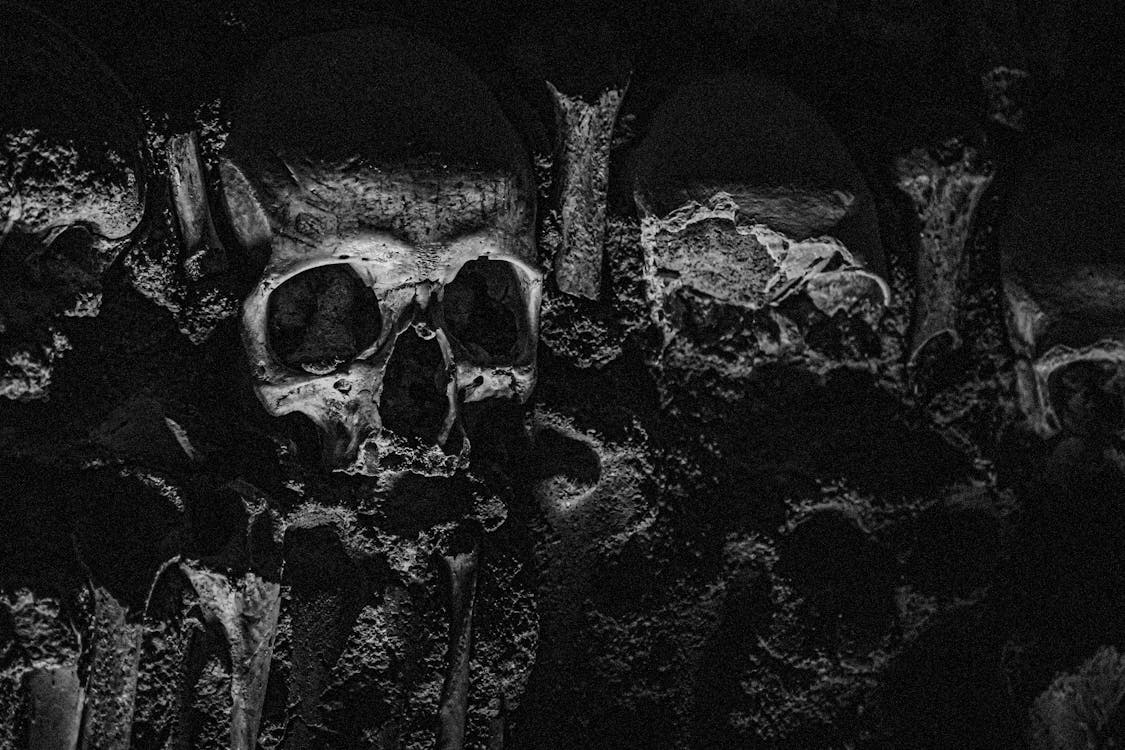The 1982 supernatural horror film Poltergeist, directed by Tobe Hooper and produced by Steven Spielberg, remains a chilling classic. The story follows the Freeling family as their idyllic suburban life is disrupted by malevolent spirits who manifest through increasingly terrifying paranormal phenomena in their new home. Poltergeist‘s special effects, innovative for the time, and its blend of scares and domestic vulnerability continue to resonate with audiences.
One of the film’s enduring urban legends centers around the use of real human skeletons in the swimming pool scene where the Freeling’s youngest daughter, Carol Anne, disappears. Were real skeletons truly used in the production? Let’s delve deeper into this chilling rumor and explore the fascinating behind-the-scenes secrets of this iconic film.
The Power of Suggestion: The Origins of the Real Skeleton Rumor
The rumor of real skeletons in Poltergeist likely stems from several factors:
-
The scene’s unsettling realism: The special effects team achieved a bone-chilling verisimilitude in the pool scene. The skeletons move with an unsettling fluidity, and their appearance is remarkably lifelike. This realism fueled speculation that real human remains were used.
-
Spielberg’s penchant for realism: Steven Spielberg is renowned for his meticulous attention to detail and his desire for on-screen realism. This reputation might have led some to believe he would go to extreme lengths, including using real skeletons, to achieve the desired effect.
-
Misinformation and the internet age: The rise of the internet facilitated the spread of the rumor. Unsubstantiated claims online, often embellished over time, can take on a life of their own.
Shedding Light on the Truth: Prop Skeletons and Special Effects
The truth surrounding the skeletons in Poltergeist is far less horrifying than the rumor suggests. The production team employed a variety of techniques to create the illusion of real human remains:
-
Prop Skeletons: The crew utilized specially made prop skeletons constructed from cast plastic or latex. These props were meticulously detailed to resemble real skeletons, creating a convincing on-screen illusion.
-
Rod Puppetry and Stop-Motion Animation: The skeletons’ movements were achieved through a combination of techniques. Rod puppeteers carefully manipulated the lightweight prop skeletons underwater, while stop-motion animation techniques were likely employed to enhance the movements in post-production.
-
Lighting and Cinematography: Skilled lighting and camerawork played a crucial role in heightening the realism of the scene. By carefully manipulating light and shadow, the filmmakers accentuated the skeletal forms, further convincing viewers they were witnessing real human remains.
The Ethics of Using Real Skeletons: Legal and Moral Considerations
The use of real human skeletons in a major Hollywood production would have posed significant ethical and legal challenges in 1982:
-
Legality: Obtaining and using real human skeletons for a film would have violated laws and regulations governing the treatment of human remains. Proper permits and documentation would have been required, and the source of the skeletons would have come under intense scrutiny.
-
Ethical Concerns: The use of real skeletons would have undoubtedly raised ethical concerns. Human remains deserve respect and proper handling. A major Hollywood production using real skeletons for entertainment purposes would likely have sparked outrage.
-
Safety Issues: Real human skeletons can harbor bacteria and other pathogens. Handling them on set would have posed health risks to cast and crew. Safer and more controllable prop skeletons were the clear choice.
The Enduring Legacy of Poltergeist: More Than Just Skeletons
Poltergeist‘s enduring legacy goes far beyond the rumor of real skeletons. The film’s success stems from its ability to tap into primal fears, explore universal themes of family and home, and deliver genuine scares.
-
A Groundbreaking Exploration of the Paranormal: Poltergeist‘s depiction of the paranormal was groundbreaking for its time. The film presented a nuanced portrayal of the spirit world, avoiding the campy clichés that often plagued the genre.
-
Special Effects Innovation: The film’s special effects, while dated by today’s standards, were revolutionary for 1982. The swimming pool scene remains a testament to the ingenuity and creativity of the special effects team.
-
A Haunting Exploration of Domesticity: Poltergeist‘s brilliance lies in its ability to weave the supernatural into a seemingly ordinary suburban setting. The film reminds us that horror can lurk beneath the surface of even the most familiar environments.
The Skeletons in the Closet: The Controversy and Lawsuits that Plagued Poltergeist
While the rumor of real skeletons is demonstrably false, Poltergeist‘s production was not without its share of controversies and legal challenges. These issues further solidified the film’s unsettling mystique:
-
The Alleged Curse: A persistent rumor claims the Poltergeist set was cursed. Several cast and crew members died tragically in the years following the film’s release, fueling speculation of a supernatural connection. These deaths were likely due to unrelated causes, but the rumor added to the film’s eerie reputation.
-
The Lawsuit Against Special Effects Techniques: Industrial Light and Magic (ILM), the special effects company founded by George Lucas, faced a lawsuit from a competitor alleging that Poltergeist‘s groundbreaking special effects techniques infringed on their patents. The lawsuit was ultimately settled out of court, but it cast a shadow over the film’s production.
-
The Psychic Consultation Controversy: The film opens with a scene depicting a psychic hired to cleanse the Freelings’ home before they move in. Some psychics and parapsychologists criticized the scene’s portrayal, claiming it perpetuated negative stereotypes about their professions.
The Legacy of the Real Skeletons Rumor: A Testament to the Film’s Power
The enduring popularity of the real skeletons rumor speaks to the film’s power. Poltergeist‘s ability to blur the lines between reality and fiction, to tap into our deepest fears, ensures that audiences will continue to be captivated and unsettled for years to come. The rumor, while untrue, adds another layer to the film’s mystique, solidifying its place as a horror classic.
Beyond the Skeletons: Exploring the Cultural Impact of Poltergeist
Poltergeist‘s influence extends far beyond the horror genre. The film left a lasting mark on popular culture:
-
A Subgenre Redefined: Poltergeist helped redefine the suburban horror subgenre. The film moved away from the gothic haunted house trope and placed the horror within the seemingly safe confines of suburbia.
-
Special Effects Innovation: Poltergeist‘s special effects pushed the boundaries of what was possible on film in 1982. The film’s groundbreaking techniques influenced countless future horror films.
-
A Cautionary Tale of Progress: Poltergeist can be interpreted as a cautionary tale about the dangers of unchecked suburban sprawl and the importance of respecting the past. The film suggests that building upon sacred grounds can have unforeseen consequences.
Conclusion: A Haunting Classic Endures
Poltergeist remains a chilling and thought-provoking film. The enduring rumor of real skeletons adds to the film’s mystique, but it’s the story’s potent blend of scares, domestic vulnerability, and social commentary that secures its place as a horror classic. Poltergeist reminds us that true horror can lurk beneath the surface of even the most ordinary settings, and that sometimes, the biggest chills come not from what we see, but from what we imagine.

